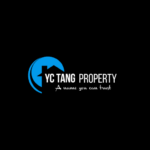Have you been shopping around for a home loan?
Yes, looking for your dream home is exciting but figuring out how you will pay for it is an important step to seal the deal.
Unless you’re born into a multi-millionaire family, most of us will need to apply for a loan when buying a house. This means that one of the most monumental decisions that you will have to make during the process of buying a house is choosing the right home loan.
But before you whip out that handy housing loan calculator you have, first you have to understand what a housing loan really is.
As a general rule, housing loans, or as it’s called in some circles, property loans in Malaysia can be categorised into two different groups – conventional and islamic.
Here’s everything you need to know about each category and the types of loans under each category, to help you choose the best home loan for your needs.

Table of contents
Conventional home loan
Let’s start with the most common, the conventional loan. Being the most common, a conventional housing loan accounts for a large majority of the total housing loans in Malaysia.
So how does it work? Simple. In a conventional housing loan agreement, a borrower will agree to repay the loan amount together with interest over an agreed loan period.
Now the interest rate can be either one of three types: 1) fixed interest, 2) variable interest, or 3) a combination of the aforementioned two types.
The most common type, however, are variable interest rate loans, which means that the interest rate is tied to the base lending rate (BLR) of banks.
In conventional home loans, there are three types:
- flexi loan
- semi-flexi loan
- term loan
How do these loans differ from each other? Let’s have a look.
Flexi home loan
Flexi home loans are similar in nature and how it works with semi-flexi loans, but with one big difference. Flexi housing loans are connected to your banking account, and the pre-agreed instalment amount will be automatically deducted from it every month. If you choose to make any additional payments, you’ll simply have to make manual payments.
Semi-flexi loan
As the name suggests, a semi-flexi loan allows for more flexibility for the borrower in terms of making repayments. Borrowers can choose to pay more in order to lower the interest you will need to pay.
Term Loan
A term loan comes with a fixed monthly instalments. This means that the interest rate of a term loan will not change over the years, even if the borrower makes additional repayments ahead of schedule. In fact, some banks impose a penalty for an early loan resettlement.
Now this is something that your quick housing loan calculator might not take into account, so you have to keep that in mind.
Now don’t get it wrong, these three aren’t the only types of housing loans out there. There are others such as the refinancing loans, government housing loans, and joint home loan, but these loans are typically only available for people who qualify under those categories of borrowers.
Islamic versus conventional home financing
Islamic home financing
While on the surface Shariah-based Islamic home financing products might look like they have the same key characteristics as its conventional counterpart, they are based on different concepts and principles.
In a conventional housing loan in Malaysia, banks earn interest from the borrower. In contrast, Islamic home financing products are forbidden from taking interest from the borrower. This is also why you will almost never see the word ‘loan’ used to describe Islamic products, as the word ‘loan’ suggests an agreement which involves an interest payment. Instead, Islamic financing products will be described as a ‘financing facility.’
Islamic home financing in Malaysia typically comes in two types – Bai’ Bithaman Ajil (BBA) or Musharakah Mutanaqisah (MM).
Bai’ Bithaman Ajil (BBA) home financing
Out of the two, the BBA home financing is easier to understand. Under this home financing product, the bank will first buy the property at the current market price, and they will proceed to sell the property to the customer at an agreed price. This agreed price will include the outlay the bank took out to purchase the property, and a mark-up as profit for the bank.
The bank and the customer will agree to a term and a monthly instalment amount, which means that no interest is charged.
Musharakah Mutanaqisah (MM) home financing
Now for MM home financing, it’s a bit more complicated than its BBA counterpart. In a MM home financing system, the customer and the bank jointly buy and own the property. The bank will then proceed to lease its share of the property to the customer, and in return the customer will promise to buy the banks ownership of the property. The customer will pay rental to the bank under the concept of ijarah, where a portion of the payment is used to slowly purchase the bank’s share of the property.
Signing up for a home loan or financing is a long-term commitment for most people so it’s a financial move that you must prepare for carefully.
Don’t forget that owning a property also comes with other financial commitments besides a home loan, like paying for the downpayment, various fees and charges to legally own the property as well as the annual land taxes you need to pay as a property owner.
And also don’t forget to get all the help you can, and make use of tools such as a good housing loan calculator to help you determine which loan is the best for you.
This article was first published on imoney.my.
About iMoney.my
iMoney.my (Intelligent Money) is an award-winning financial intelligence centre that helps simplify personal financial decision-making for Malaysians. Since we started in 2012, our purpose has remained to help people reach their goals through good money decisions.
Our personal finance content is the go-to source for Malaysians looking for useful and actionable money tips that they can apply in their daily life.
